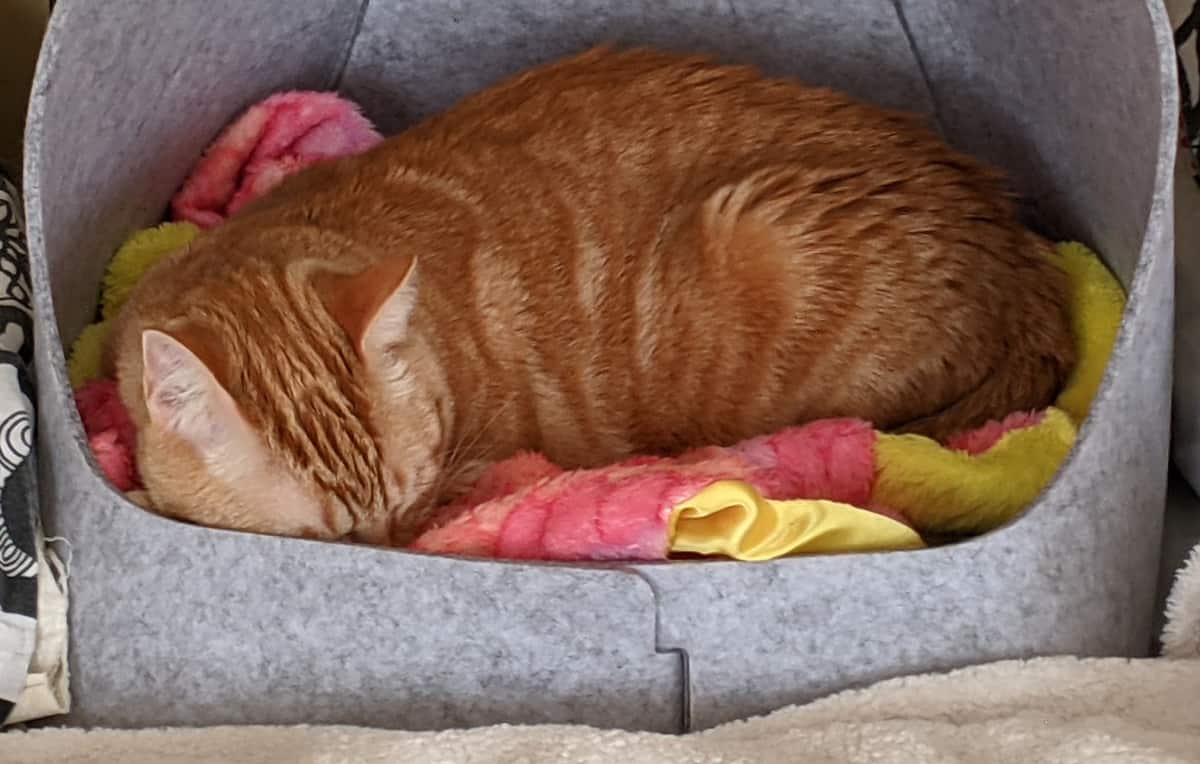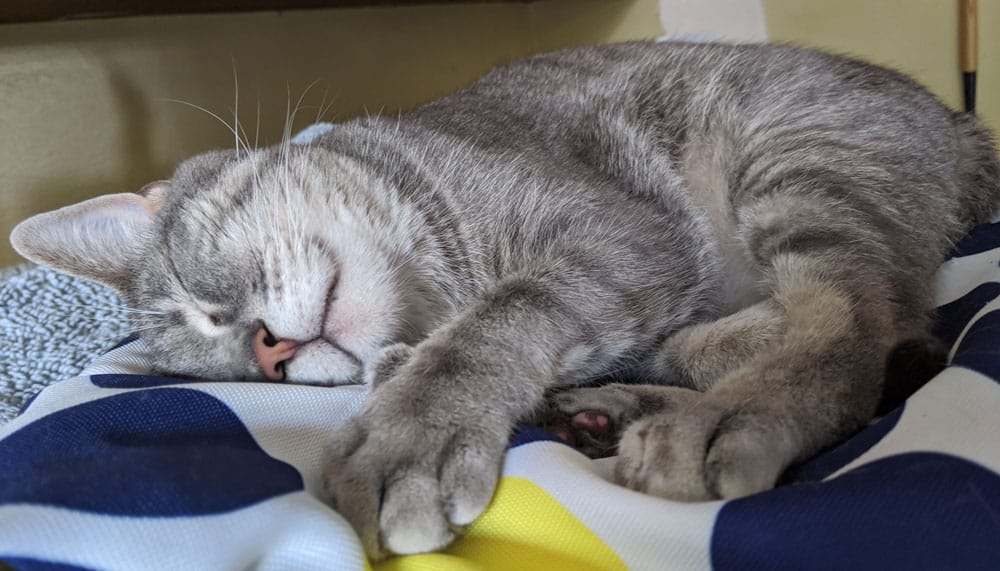Cats sleep. A lot.
Kittens can sleep up to 24 hours a day, waking only for short moments to nurse. As your cat enters their senior years, the amount of sleep increases.
Why do domestic cats sleep so much?
House Cats are Crepuscular
Domestic cats are crepuscular which means they are most active at dawn and dusk. This period of heightened activity dovetails with the activity patterns of small rodents and birds that felines tend to hunt.
This pattern is why your cat tends to try and wake you up at 6 am for their breakfast, and why your cats seem to develop a case of the zoomies in the early evenings.

Cats are Wired for Short Bursts of Energy
Cats sleep to rejuvenate their energy stores in preparation for the next hunt, even if it’s just to chase down that toy mouse down the hall.
High Protein Diets Require Energy to Digest
As obligate carnivores, cats eat a diet high in protein. Protein, in the form of meat, takes a lot longer to digest than carbs.
The same way you may feel sleepy after a heavy meal, your cat will often head for a nap after breakfast to digest their meal.

Cats Become Long-sighted During Sleep
When a cat sleeps, their eyesight becomes long-sighted as they relax. When the cat awakens, their eyesight will come back into focus (Bradshaw, 2012, p. 28).
Sleep Positions of Cats
Cats have two types of sleep: a deep sleep and a lighter sleep where the cat is ready to spring into action.
The loaf position is where the cat will sleep upright with one or both front paws tucked underneath their body. While the cat looks extremely relaxed, this position allows the cat to quickly react to any changes in the surrounding environment.
Cats in the loaf position are snoozing lightly.

When a cat is curled up tightly in a crescent shape, your cat is sleeping deeply. This defensive sleep position ensures that none of your cat’s vulnerable body parts like the belly are exposed.
If you walk into the room and your cat doesn’t react, that’s a sign that your cat is sleeping deeply.

If the cat has their head tucked underneath their paws, that’s a sure sign that the cat is sleepy deeply and doesn’t want to be disturbed.

When your cat is splayed out with their belly exposed during sleep, this mean your cat is extremely relaxed and comfortable in their environment.

References
Bradshaw, J. W. (2012). The behaviour of the domestic cat. Cabi.






